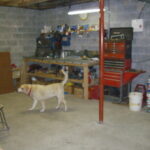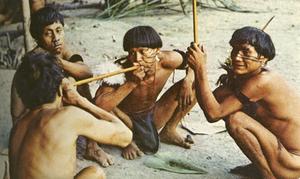Whether you are advertising a class you are going to teach, or you are part of a committee promoting a professional or social event, producing a relevant and effective flyer is a first step to helping that workshop, event, or fundraiser succeed. Although eye-catching graphics may get people to look at your flyer, if it doesn’t give them useful information then the document has failed its purpose.
How to Create a Flyer
A flyer will fill either a half-sheet of paper or a full piece. If you will be emailing your flier, keep it on a letter-size, 8 ½” x 11″, piece of paper because that is what most people have in their home printers. Also consider how much color you will use as people may resent printing out a one-page document that is completely in color, except for a narrow white margin. This is an important consideration, particularly if you want people to print out more than one copy of the flyer.
You want to start by typing the basic information into a document. Don’t worry about the order the information appears in; at this point you just want to see what you’ll need to include. That information includes –
WHO is hosting or holding the event? You may also need to include information about the recipient of funds raised during the event, if that is its purpose. If you are teaching a workshop, you may want to include your credentials. Is there a telephone or email contact for people to use or is there a website with more information?
WHAT is the event? Is the event a dance recital, a school carnival, a class, etc? Name the event in five words or less. Additional information can be included in a subheading.
WHEN is the event? I’m fond of flyers that list the day of the week as well as the date, which should be written out; for example, Wednesday, March 30 as opposed to 3/30. This just makes it very clear to the people who glance as this information. ‘When’ also includes the time of the event. List the start time. If people have to be out of a room by a certain time, list the end time; however, if the end time is flexible, you may want to avoid including it so you don’t send mixed messages.
WHERE is the event? Give the name of the location and the address. You may even want to type the information into Mapquest or Googlemaps to make certain the directions are clear. Consider listing helpful information, such as the color of the building or nearby identifying landmarks that will catch people’s eye. If it isn’t clear where people can park, include that information on the flyer.
WHY and HOW is this event being held? If the event is a fundraiser, tell people for whom or what. What will people get out of this event (food, prizes, entertainment, cash bar, raffles, etc)?
Once you have all the information, save the document and start rearranging the order of the information on the flyer. You may decide that you can condense some facts that are saying the same thing twice.
Using Font Styles and Sizes
Use one or two fonts for the document. Don’t go crazy underlining, bolding, and italicizing the content because it will make the page look cluttered. Select two or three font sizes and keep information with the same level of importance the same size. The same goes for color – don’t make your flyer look like a note written by an eight-year-old with a new box of markers.
Print the document and step back a few feet. Even if you can’t read all of the information, can you at least read the name of the event? No matter how much you love a type face, is it easy to read? If the document looks like a page from a book, consider if you can eliminate information or even make the font smaller, creating more white space. Add a relevant graphic or photo.
You’ll need to save the folder as a .pdf and possible as a .jpeg. If you are emailing flyers, a .pdf file saves you from answering emails from people who couldn’t open the file as a word processing document. (If you want to post your flyer to Facebook or other online sites then you’ll need to save it as a .jpeg. If you don’t know how to do this, ask around with other people who have the same software that you do.) Now, start sharing the word about your event.




